Dollar Weakens, Gold Rises
By Colin Twiggs
November 28, 2006 5:30 p.m. AEDT (1:30 a.m. ET)
November 28, 2006 5:30 p.m. AEDT (1:30 a.m. ET)
These extracts from my daily trading diary are for educational
purposes and should not be interpreted as investment advice.
Full terms and conditions can be found at
Terms of Use. The next newsletter (an update on Stocks
& Indexes) will be on Saturday.
Gold
Spot gold is testing resistance at $640 after rallying strongly
since the breakout above $600.
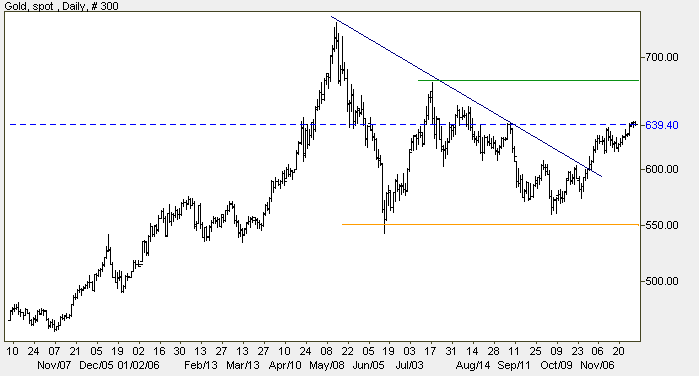
Source: Netdania
Medium Term: Expect further resistance between $640 and
$675, but a weakening dollar should increase demand for gold.
Breakout above $675, or a narrow consolidation below that
level, would be a strong bull signal.
Long Term: Primary support at $540/$550 may come under pressure if oil prices continue to weaken.
Long Term: Primary support at $540/$550 may come under pressure if oil prices continue to weaken.
Crude Oil
January 2007 Light Crude rallied to $60.32 on Monday and
appears headed for a test of resistance at $63.00/barrel.
Medium Term: A breakout from the broadening formation would signal the direction of crude oil prices over the next few months. A failure to test the opposite border may indicate which direction that is likely to be.
Medium Term: A breakout from the broadening formation would signal the direction of crude oil prices over the next few months. A failure to test the opposite border may indicate which direction that is likely to be.
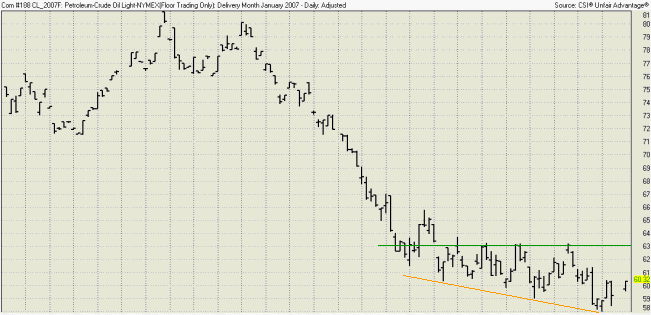
Long Term: Failure of support at $55 support level would
warn of a long-term down-trend. Consolidation above this level
would establish a base for continuation of the up-trend.
Currencies
The euro broke out from its consolidation of the last 6
months, rallying to $1.3145 dollars. Expect a pull-back to test
the new support level at $1.30.
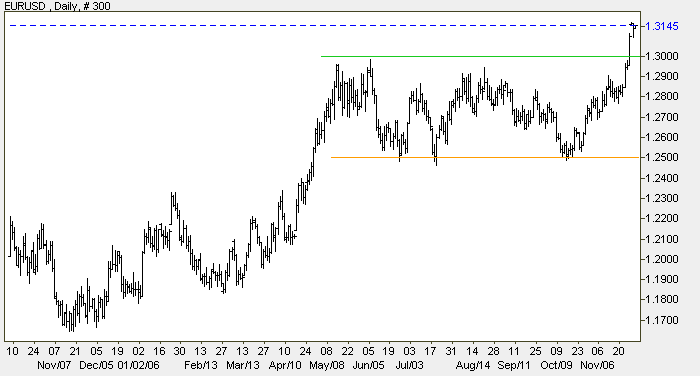
Source: Netdania
Medium Term: The upward breakout is likely to test the
early 2005 high of $1.37.
Long Term: Threat of a large head and shoulders reversal has receded and the euro's up-trend against the dollar is likely to continue.
Long Term: Threat of a large head and shoulders reversal has receded and the euro's up-trend against the dollar is likely to continue.
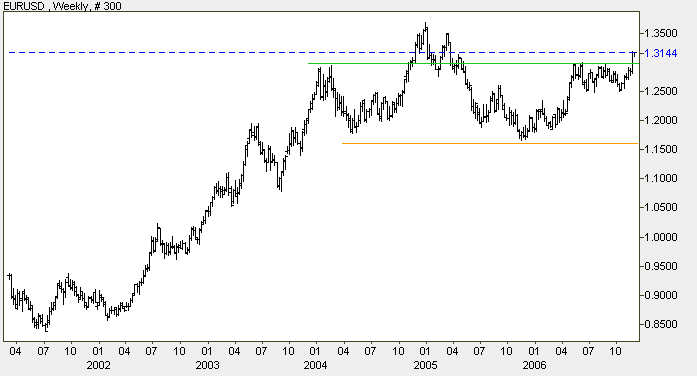
Source: Netdania
Treasury yields
The 10-year yield continues in bear territory below its 100-day
moving
average. Having penetrated support at 4.60%, the yield is
headed for a test of the long-term trendline.
Medium Term: Failure of the long-term trendline would complete the bearish picture for long-term yields.
The yield differential (10-year T-notes minus 13-week T-bills) continues its down-trend below zero, increasing the risk of an economic slow-down.
Medium Term: Failure of the long-term trendline would complete the bearish picture for long-term yields.
The yield differential (10-year T-notes minus 13-week T-bills) continues its down-trend below zero, increasing the risk of an economic slow-down.
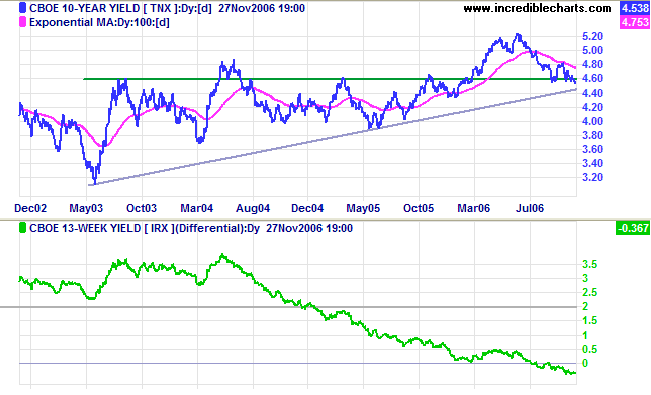
Long Term: Probability of recession in the next
four quarters increased to 43 per cent last week,
according to the Wright
Model. A rise above 50 per cent would be cause for
concern.
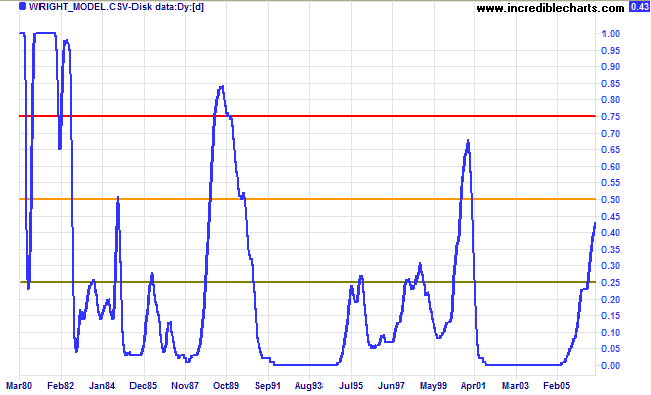
There's (a) problem that I think is brewing,
and that is the end of the housing boom in the United
States
and the ability of households to spend more than they earn because the value of their house is rising.
~ George Soros
and the ability of households to spend more than they earn because the value of their house is rising.
~ George Soros
Technical Analysis and PredictionsI believe that Technical Analysis should not be used to make predictions because we never know the outcome of a particular pattern or series of events with 100 per cent certainty. The best that we can hope to achieve is a probability of around 80 per cent for any particular outcome: something unexpected will occur at least one in five times.My approach is to assign probabilities to each possible outcome. Assigning actual percentages would imply a degree of precision which, most of the time, is unachievable. Terms used are more general: "this is a strong signal"; "this is likely"; "expect this to follow"; "this is less likely to occur"; "this is unlikely"; and so on. Bear in mind that there are times, especially when the market is in equilibrium, when we may face several scenarios with fairly even probabilities. Analysis is also separated into three time frames: short, medium and long-term. While one time frame may be clear, another could be uncertain. Obviously, we have the greatest chance of success when all three time frames are clear. The market is a dynamic system. I often compare trading to a military operation, not because of its' oppositional nature, but because of the complexity, the continual uncertainty created by conflicting intelligence and the element of chance that can disrupt even the best made plans. Prepare thoroughly, but allow for the unexpected. The formula is simple: trade when probabilities are in your favor; apply proper risk (money) management; and you will succeed. For further background, please read About The Trading Diary. |
